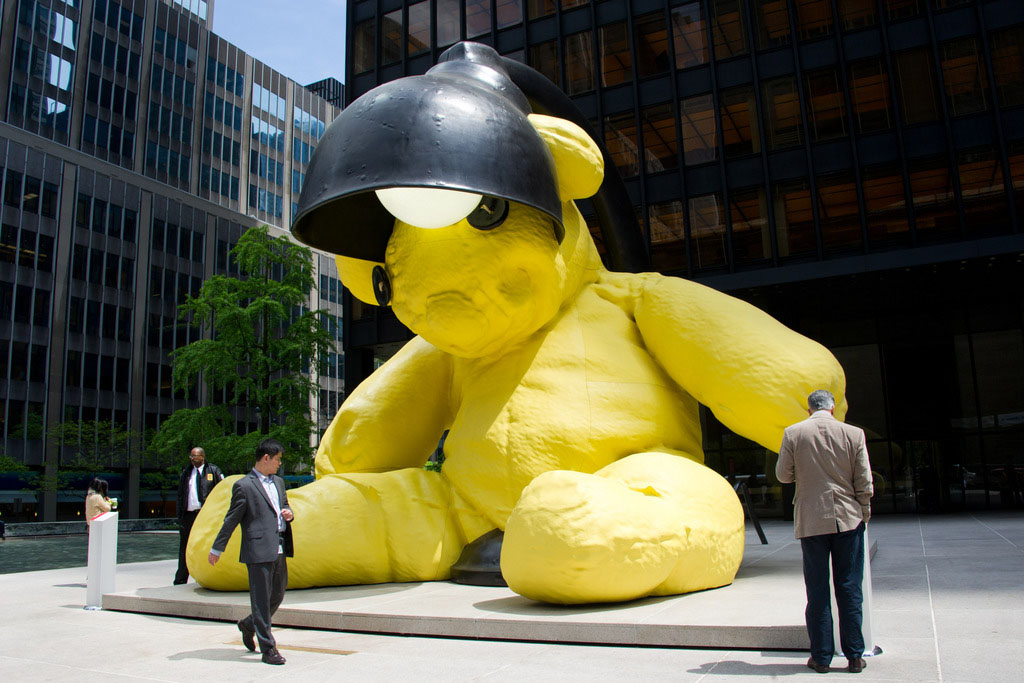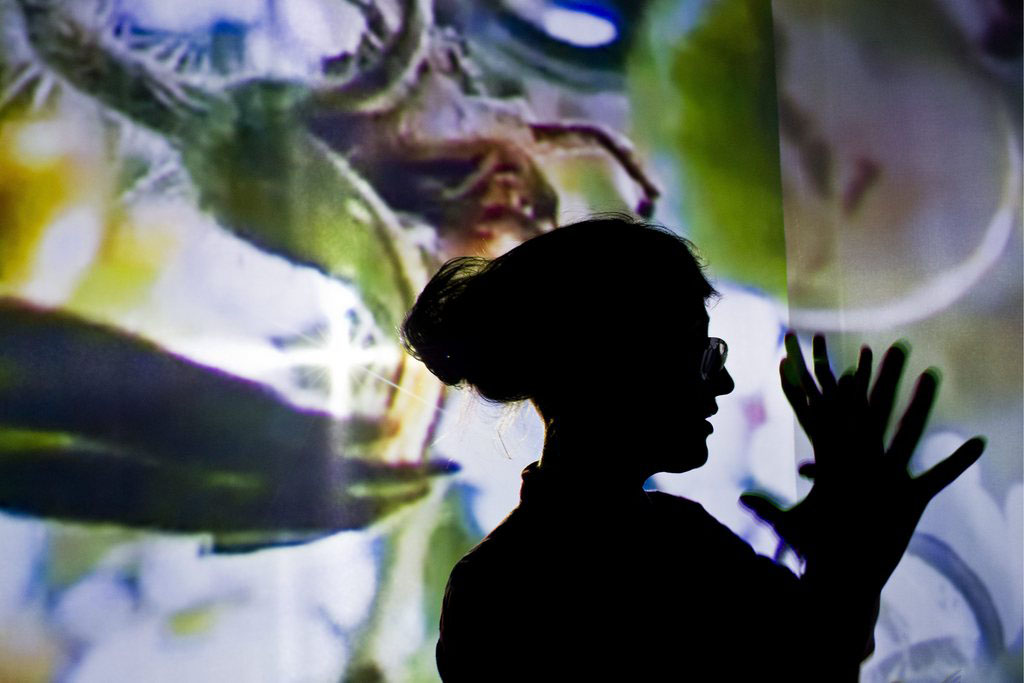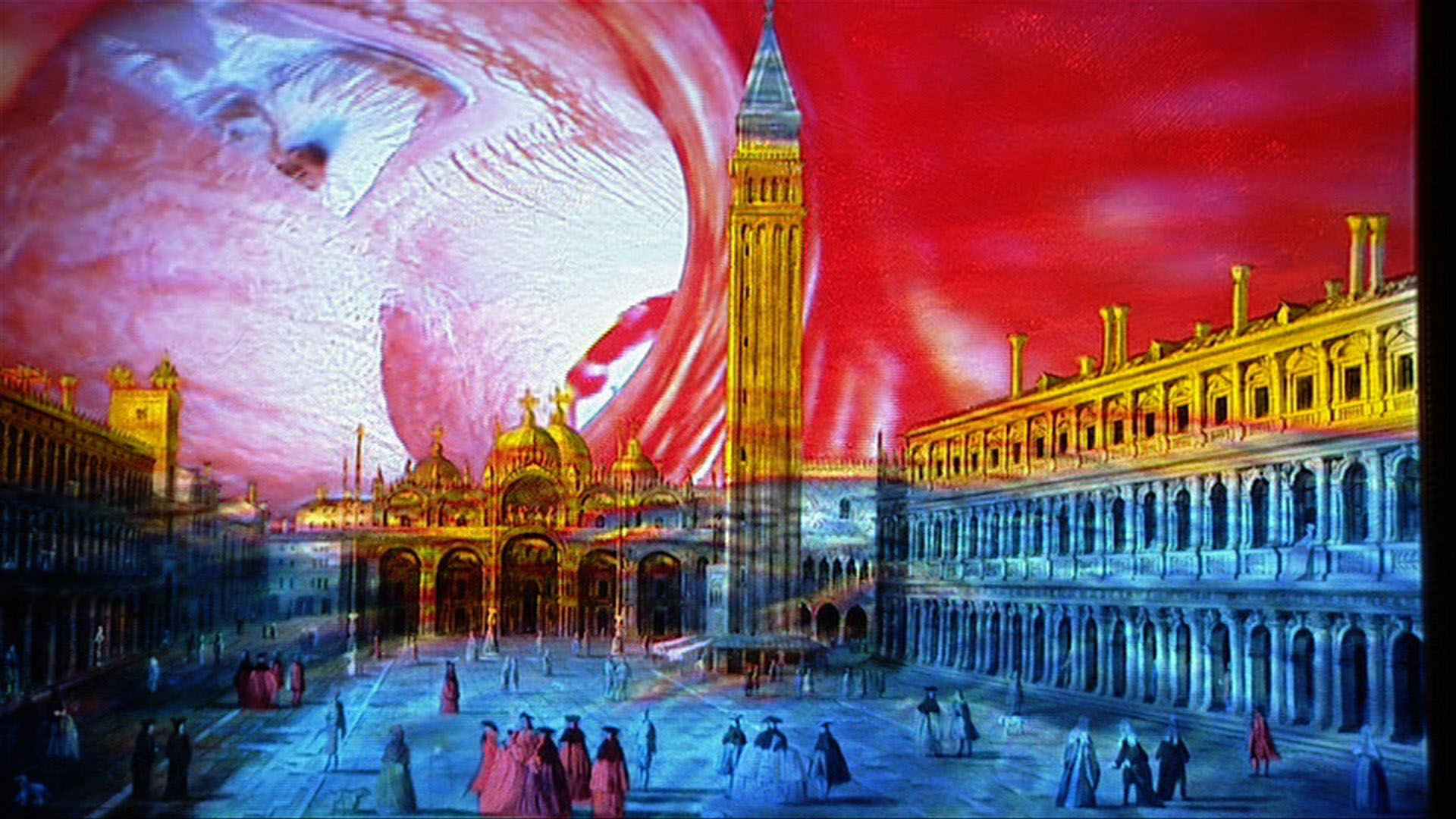Being Swiss gives contemporary artists a leg-up

Pipilotti Rist is among a crop of Swiss artists making waves. Take Urs Fischer’s live nudes show in Venice or the global acclaim for Ugo Rondinone's mixed-media works. So how does a small country produce so many contemporary visual artists?
“Switzerland is reaping the benefit of an extraordinary coincidence of several factors,” says Laura Arici, lecturer in Fine Art at Zurich University for the Arts.
She points to the rise of Zurich as an international art centre, starting back in the 1980s with the Halle fur Neue Kunst in Schaffhausen and the founding of Parkett magazine. Major galleries have since become active in the city. Today the country benefits from a tight network of art aficionados, as well as art schools in Basel, Zurich, Lucerne, Geneva and Lausanne.
“When you are a young artist in Switzerland, from the very beginning of your career, you will have an opportunity to show your work. And the directors of big institutions will come – they are interested in seeing new artists. So you’re easily shown and easily seen. It’s easier to emerge, as a new artist,” notes Swiss artist Marc Bauer.
Bauer comes from Geneva, and his drawings are currently on show at the Muttenz Kunsthaus in canton Basel Country. He contrasts the opportunities available to artists in Switzerland with other countries.
“I get the feeling, if you’re not in the right street, or in the right gallery, you won’t get seen.” He has received three national Swiss Art Awards – worth SFr25,000 ($25,700) each – and is the beneficiary of a country where the museum count is high, and the economic climate means plenty of people can afford to collect art.
“I don’t think Swiss artists are better than others, it’s just that the support is very efficient,” he tells swissinfo.ch.
Early sign of success
Support for artists in Switzerland can come from the federal government, but financial support at this level is relatively low. There is an annual budget of just over SFr200,000 for acquiring works, typically destined for public buildings and embassies. The federal government also organises the Swiss Art Awards, 18 of which are handed out annually.
Pipilotti Rist, Ugo Rondinone and Urs Fischer were young recipients of these prizes, so they are either good predictors for future success, or winning one gives artists a certain visibility.
However it’s the cities and cantons that are at the heart of Swiss culture policy. They will collect art, set up and support museums.
But they can go much further than that. “For example, the city of Neuchâtel has an apartment and studio in Berlin that it lends to local artists for months at a time,” says Pascal Griener, head of Neuchâtel’s institute of modern art.
“The idea is Swiss artists will get to spend time abroad in major art cities.”
Those artists will also get a small stipend of SFr1,000 per month. Other cantons have similar arrangements. Cantons of French-speaking Switzerland, for example, share access to a small studio in New York which rotates between artists from each canton every six months. Removing money worries is one way of helping artists to work, and being abroad can help them make a name away from home.
Some cantons, like Basel City, have created an arts funding commission (the Kunstkredit), straddling the culture and construction departments of the canton. This has a yearly budget of SFr320,000, of which SFr200,000 must be spent on works by local artists, and SFr120,000 goes on commissions.
“Definitely lots of support”
In 1991, a certain Pipilotti Rist was awarded SFr9,150 as part of the performance group Les Reines Prochaines, to carry out a live work. The performance, Seien Sie Flugdame, was carried out in six places in Basel. Also that year, Rist would win a Swiss Art Award in her own right. By 1997 she was crowned with a prize at the Venice Biennale.
Rist would later be commissioned to install a work in New York’s Museum of Modern Art, Pour Your Body Out (7354 Cubic Meters) which won the International Art Critics Award for best exhibition of digital, video or film output in 2009.
The arts funding commission also organises visits to artists’ workplaces so the public can better understand their work. Boris Rebetez, an artist from canton Jura and working in Basel, welcomed a visit to his atelier in 2008.
“Definitely there is a lot of support in Switzerland when you finish your education and that is a crucial stage. On the other hand the market in Switzerland is small, as it is not a big country,” he says.
But artists agree that Swiss collectors are perhaps more daring in their purchases. “A lot of big collectors won’t wait for you to be an established artist, they will buy straight away,” says artist Marc Bauer.
Griener points out that “two of the first people to buy a Picasso were a couple of Swiss collectors, Hermann and Margrit Rupf, from Bern. They were not necessarily rich, but were serious about collecting”.
Beyond borders
Bernhard Hegglin is a 23-year-old artist based in Zurich. He’s currently exhibiting in the Kunstraum in Riehen, Basel, a small museum set up by the municipality just a few metres from the prestigious Beyeler Foundation.
“I enjoy working in Zurich, but I think it would be great to go and spend a couple of years working abroad. I would always come back to Switzerland, it’s home, but I’m keen to spend some time away, to see different things,” he tells swissinfo.ch.
This mentality of going beyond borders has informed Swiss art since serious collectors emerged in the 17th and 18th centuries, when young Swiss merchants and bankers went abroad to learn their trade, and ended up creating substantial art collections. And this mentality is very useful in today’s art market, globalised as it is.
“Artists like Urs Lüthi and Fischli/Weiss were the first Swiss artists not to see themselves as Swiss artists but as international ones,” says Laura Arici, lecturer in Fine Art at Zurich University for the Arts.
“For the next generation of artists like Ugo Rondinone, Pipilotti Rist, Urs Fischer, to name a few, the question of nationality is almost obsolete.”
Switzerland has 8,000 registered artists.
Switzerland has the highest number of museums per capita in the world, more than 1,000 in total. Many of these are small, but Basel’s Kunstmuseum and Zurich’s Kunsthaus are well-known outside Switzerland.
Pro Helvetia is the government supported foundation in charge of promoting Swiss culture, including books, music, visual arts, dance and cinema. Two-thirds of its budget is allotted to be spent abroad. It is also in charge of Switzerland’s pavilions and exhibitions at international shows, such as the Venice biennale, directed in 2011 by Swiss art historian and publisher Bice Curiger.
A 2002 Council of Europe comparison of spending on culture put Swiss expenditure at €212 per capita, ahead of France (€197) Finland (€143) Germany (€102), Italy (€118) although lower than Sweden ( €216). This doesn’t cover private institutions, which in Switzerland play a large role.
Some of the institutions responsible for boosting art appreciation in Switzerland are the arts associations. There are at least 35 in Switzerland, and the oldest were founded in the late 1700s. Then, the associations would set up the Kunsthalle, or museums, as well as buying art to go in them and organising debates around art. They created a space and a respect for artists without weighing heavily on state finances.
These associations are still going strong, with more than 44,600 members across Switzerland, paying anything from SFr20-1,000 in annual membership fees. Some associations, such as in Biel or Olten, organise and finance artist residences abroad, in Berlin and Genoa respectively. Basel’s association and Kunsthalle had a budget of over SFr2.3 million in 2010, although Basel City co-finances them.
Sources: Pascal Griener, Pro Helvetia, Swiss Federal Office for Culture, Council of Europe, Basel Kunsthalle, Kunstverein.ch

In compliance with the JTI standards
More: SWI swissinfo.ch certified by the Journalism Trust Initiative


You can find an overview of ongoing debates with our journalists here. Please join us!
If you want to start a conversation about a topic raised in this article or want to report factual errors, email us at english@swissinfo.ch.